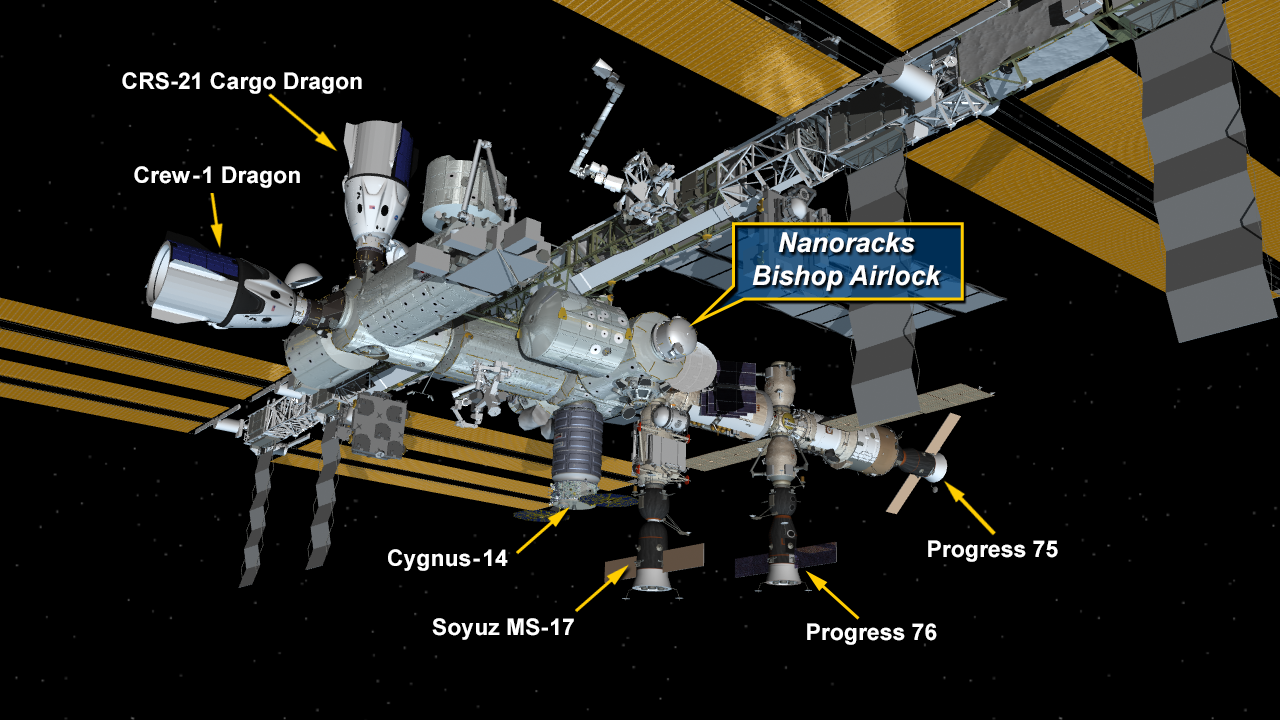
Science operations continue to expand aboard the International Space Station with the installation of a new research airlock over the weekend. The seven-member Expedition 64 crew also stayed busy exploring a variety of space biology and physics phenomena.
Robotics controllers on Earth spent Saturday remotely commanding the Canadarm2 robotic arm to install the new NanoRacks Bishop science airlock delivered Dec. 7 aboard the SpaceX Cargo Dragon resupply ship. During a series of hours-long maneuvers, Bishop was extracted from Dragon’s unpressurized trunk and installed on the port side of the Tranquility module adjacent to BEAM, the Bigelow Expandable Activity Module.
Bishop significantly increases the capacity for public and private research on the outside of the orbiting lab. The new science airlock also enables the deployment of larger satellites and the transfer of spacewalking tools and hardware inside and outside the station.
Dragon also delivered over 2,000 pounds of new science investigations to the orbiting lab keeping the seven-member crew busy throughout December. Some of that research took place over the weekend with the astronauts studying planetary exploration technologies and potential treatments for heart conditions on and off the Earth.
The new BioAsteroid experiment is looking at microbes as a way to breakdown space rocks into fertile soils or extract valuable metals and minerals. The crew serviced samples inside the Kubik incubator on Sunday for the study seeking to enable biomining that may advance space exploration and settlement.
Flight Engineer Kate Rubins has been leading the Cardinal Heart study since activating the experiment shortly after its arrival aboard the Cargo Dragon. She serviced engineered heart tissues over the weekend to understand the cardiovascular response to microgravity. Results may give deeper insights into aging and weakening heart muscles that may lead to more effective therapies for humans living on and off the Earth.

Amazing! Please keep us updated on the studies being done in the ISS! Thanks
This is nothing short of Awesomeness. I had hoped in my lifetime we would have a huge station in space, like the movies. Plexiglass walls and regular people experience the marvel of space. Till then I’ll keep on dreaming.
A shame there are so many broken links on this page.
Thanks Fred for pointing this out. NASA has transitioned to a new website structure requiring our team to update numerous links. This process is underway and older links from the previous website are being redirected into the new website. Thanks for your patience.